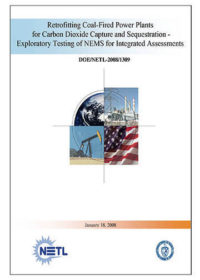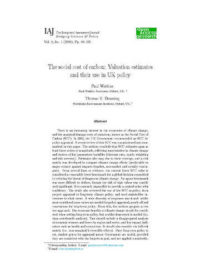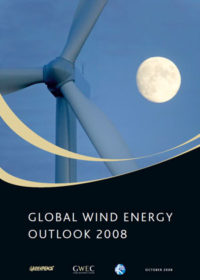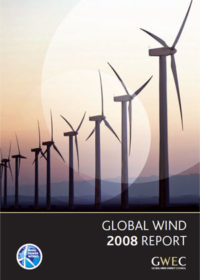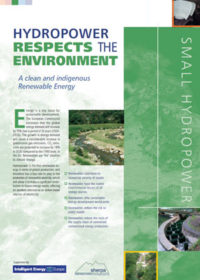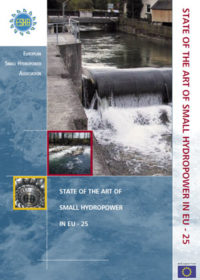Resources
Publications
Our publications, reports and research library hosts over 500 specialist reports and research papers on all topics associated with CCS.
View our Publication Library Disclaimer.
Filter by
Retrofitting coal-fired power plants for carbon dioxide capture and sequestration: exploratory testing of NEMS for integrated assessments
18th January 2008
Topic(s): Carbon capture use and storage (CCUS), CO2 capture, Economics
Disclaimer
The content within the Global CCS Institute Publications, Reports and Research Library is provided for information purposes only. We make every effort and take reasonable care to keep the content of this section up-to-date and error-free. However, we make no claim as to its accuracy, currency or reliability.
Content and material featured within this section of our website includes reports and research published by third parties. The content and material may include opinions and recommendations of third parties that do not reflect those held by the Global CCS Institute.
The social cost of carbon: valuation estimates and their use in UK policy
1st January 2008
Topic(s): Economics, Social cost
Disclaimer
The content within the Global CCS Institute Publications, Reports and Research Library is provided for information purposes only. We make every effort and take reasonable care to keep the content of this section up-to-date and error-free. However, we make no claim as to its accuracy, currency or reliability.
Content and material featured within this section of our website includes reports and research published by third parties. The content and material may include opinions and recommendations of third parties that do not reflect those held by the Global CCS Institute.
Regulation of carbon capture and storage
1st January 2008
Topic(s): Carbon capture use and storage (CCUS), Policy law and regulation
This policy brief concentrates on a key institutional barrier: the defi cit of regulatory frameworks for capture and storage of CO2. It builds upon IRGC commissioned papers and a workshop involving eleven international teams which was held in Washington DC in March 20071 and from comments and presentations made during a conference held in November 2007 at the Swiss Re Centre for Global Dialogue, Rüschlikon, Switzerland.
Disclaimer
The content within the Global CCS Institute Publications, Reports and Research Library is provided for information purposes only. We make every effort and take reasonable care to keep the content of this section up-to-date and error-free. However, we make no claim as to its accuracy, currency or reliability.
Content and material featured within this section of our website includes reports and research published by third parties. The content and material may include opinions and recommendations of third parties that do not reflect those held by the Global CCS Institute.
This report assess the available technology for power generation from renewables and efficiency increases leads the author to conclude that a low-carbon future lies just round the corner.
Disclaimer
The content within the Global CCS Institute Publications, Reports and Research Library is provided for information purposes only. We make every effort and take reasonable care to keep the content of this section up-to-date and error-free. However, we make no claim as to its accuracy, currency or reliability.
Content and material featured within this section of our website includes reports and research published by third parties. The content and material may include opinions and recommendations of third parties that do not reflect those held by the Global CCS Institute.
From EOR to CCS: The evolving legal and regulatory framework for carbon capture and storage
1st January 2008
Topic(s): Carbon capture use and storage (CCUS), Policy law and regulation
Carbon capture and storage has been proposed around the world as a potentially key technology for reducing carbon dioxide (CO2) emissions. The United States oil and gas industry has a long experience in transporting, injecting, and effectively storing CO2 in tertiary oil recovery operations usually known as Enhanced Oil Recovery. As a result, there already exists a legal and regulatory framework that addresses many – but not all – of the issues that will need to be addressed if carbon capture and storage is to be adopted by policymakers as part of a carbon regulation regime. A review of that existing framework allows identification of those aspects that appear adequate to govern the sale, transport, and injection of CO2 for carbon capture and storage purposes as well as those that do not. Building on this analysis, the authors conclude that the current legal framework will be largely adequate from a transactional and interim standpoint to allow parties to structure a relatively seamless transition from CO2 storage that is an incidental result of oil production operations to those incremental injections of CO2 intended solely for permanent underground storage. The authors also suggest some possible approaches for crafting new rules to fill potentially remaining legal or regulatory gaps.
Disclaimer
The content within the Global CCS Institute Publications, Reports and Research Library is provided for information purposes only. We make every effort and take reasonable care to keep the content of this section up-to-date and error-free. However, we make no claim as to its accuracy, currency or reliability.
Content and material featured within this section of our website includes reports and research published by third parties. The content and material may include opinions and recommendations of third parties that do not reflect those held by the Global CCS Institute.
The Global Wind Energy Outlook 2008, published by the Global Wind Energy Council (GWEC) and Greenpeace International, examines the global potential of wind power up to 2050. The report concludes that wind energy could play a key part in achieving a decline in emissions by 2020 as per the IPCC specifications. This report seeks to answer questions about the global wind industry including how important a role it will play, and what share of the global electricity ‘pie’ can and will wind occupy in the future.
Disclaimer
The content within the Global CCS Institute Publications, Reports and Research Library is provided for information purposes only. We make every effort and take reasonable care to keep the content of this section up-to-date and error-free. However, we make no claim as to its accuracy, currency or reliability.
Content and material featured within this section of our website includes reports and research published by third parties. The content and material may include opinions and recommendations of third parties that do not reflect those held by the Global CCS Institute.
This is the fourth annual report on the status of the global wind industry by the Global Wind Energy Council, and it provides a comprehensive snapshot of this global industry - present in more than 70 countries. The data and country profiles for this report have been collected through GWEC’s member associations and companies around the world, as well as from other analysts and government contacts.
Disclaimer
The content within the Global CCS Institute Publications, Reports and Research Library is provided for information purposes only. We make every effort and take reasonable care to keep the content of this section up-to-date and error-free. However, we make no claim as to its accuracy, currency or reliability.
Content and material featured within this section of our website includes reports and research published by third parties. The content and material may include opinions and recommendations of third parties that do not reflect those held by the Global CCS Institute.
Hydropower respects the environment: a clean and indigenous renewable energy
1st January 2008
Topic(s): Hydroelectricity
This brochure describes the environmental impacts of small hydropower (SHP). SHP does not produce greenhouse gas emissions, and it does not discharge pollutants to waterways. The brochure also describes SHP environmental impact assessments.
Disclaimer
The content within the Global CCS Institute Publications, Reports and Research Library is provided for information purposes only. We make every effort and take reasonable care to keep the content of this section up-to-date and error-free. However, we make no claim as to its accuracy, currency or reliability.
Content and material featured within this section of our website includes reports and research published by third parties. The content and material may include opinions and recommendations of third parties that do not reflect those held by the Global CCS Institute.
State of the art of small hydropower in EU – 25
1st January 2008
Topic(s): Domestic policy, Hydroelectricity, Incentive mechanisms
This report describes the advantages of small hydropower (SHP) and the status of the industry in Europe. It also outlines the European policy framework, and market incentives and support mechanisms. The report concludes with a discussion of challenges including standards and raising awareness.
Disclaimer
The content within the Global CCS Institute Publications, Reports and Research Library is provided for information purposes only. We make every effort and take reasonable care to keep the content of this section up-to-date and error-free. However, we make no claim as to its accuracy, currency or reliability.
Content and material featured within this section of our website includes reports and research published by third parties. The content and material may include opinions and recommendations of third parties that do not reflect those held by the Global CCS Institute.
Detection of surface deformation related with CO2 injection by DInSAR at In Salah, Algeria
1st January 2008
Topic(s): Carbon capture use and storage (CCUS), CO2 storage, Engineering and project delivery
This paper describes the use of interferometric synthetic aperture radar to map changes in the surface of the Krechba natural gas field at In Salah, Algeria. The authors state this this is the first instance the spaceborne system has been used for this purpose. They describe methodology and results, concluding that this system is a promising, cost-effective monitoring tool compared with other conventional geophysical surveys.
Disclaimer
The content within the Global CCS Institute Publications, Reports and Research Library is provided for information purposes only. We make every effort and take reasonable care to keep the content of this section up-to-date and error-free. However, we make no claim as to its accuracy, currency or reliability.
Content and material featured within this section of our website includes reports and research published by third parties. The content and material may include opinions and recommendations of third parties that do not reflect those held by the Global CCS Institute.
Coupled reservoir-geomechanical analysis of CO2 injection at In Salah, Algeria
1st January 2008
Topic(s): Carbon capture use and storage (CCUS), CO2 storage, Engineering and project delivery
This paper describes coupled reservoir-geomechanical modeling of CO2 injection at Krechba, at the In Salah geologic carbon sequestration (GCS) project in Algeria. Several studies have investigated surface uplift surrounding Krechba injection sites. In this approach, the authors simulate the actual CO2 injection in a three-dimensional model around one horizontal injection well, and conduct sensitivity studies to determine the cause and mechanisms of the uplift.
Disclaimer
The content within the Global CCS Institute Publications, Reports and Research Library is provided for information purposes only. We make every effort and take reasonable care to keep the content of this section up-to-date and error-free. However, we make no claim as to its accuracy, currency or reliability.
Content and material featured within this section of our website includes reports and research published by third parties. The content and material may include opinions and recommendations of third parties that do not reflect those held by the Global CCS Institute.
Evaluating the impact of fractures on the long-term performance of the In Salah CO2 storage site
1st January 2008
Topic(s): Carbon capture use and storage (CCUS), CO2 storage, Engineering and project delivery
This paper presents the authors’ current knowledge on the characterisation of faults and fractures at the CO2 storage demonstration site at the Krechba natural gas field at In Salah, Algeria. The authors discuss their current understanding of fault and fracture properties at Krechba, which is essential for realistic predictions of CO2 flow behaviour at the site. Furthermore, an extensive monitoring program is underway to improve the characterisation of the Krechba field as storage location and to verify the applicability of a number of monitoring methods for CO2 storage purposes.
Disclaimer
The content within the Global CCS Institute Publications, Reports and Research Library is provided for information purposes only. We make every effort and take reasonable care to keep the content of this section up-to-date and error-free. However, we make no claim as to its accuracy, currency or reliability.
Content and material featured within this section of our website includes reports and research published by third parties. The content and material may include opinions and recommendations of third parties that do not reflect those held by the Global CCS Institute.
